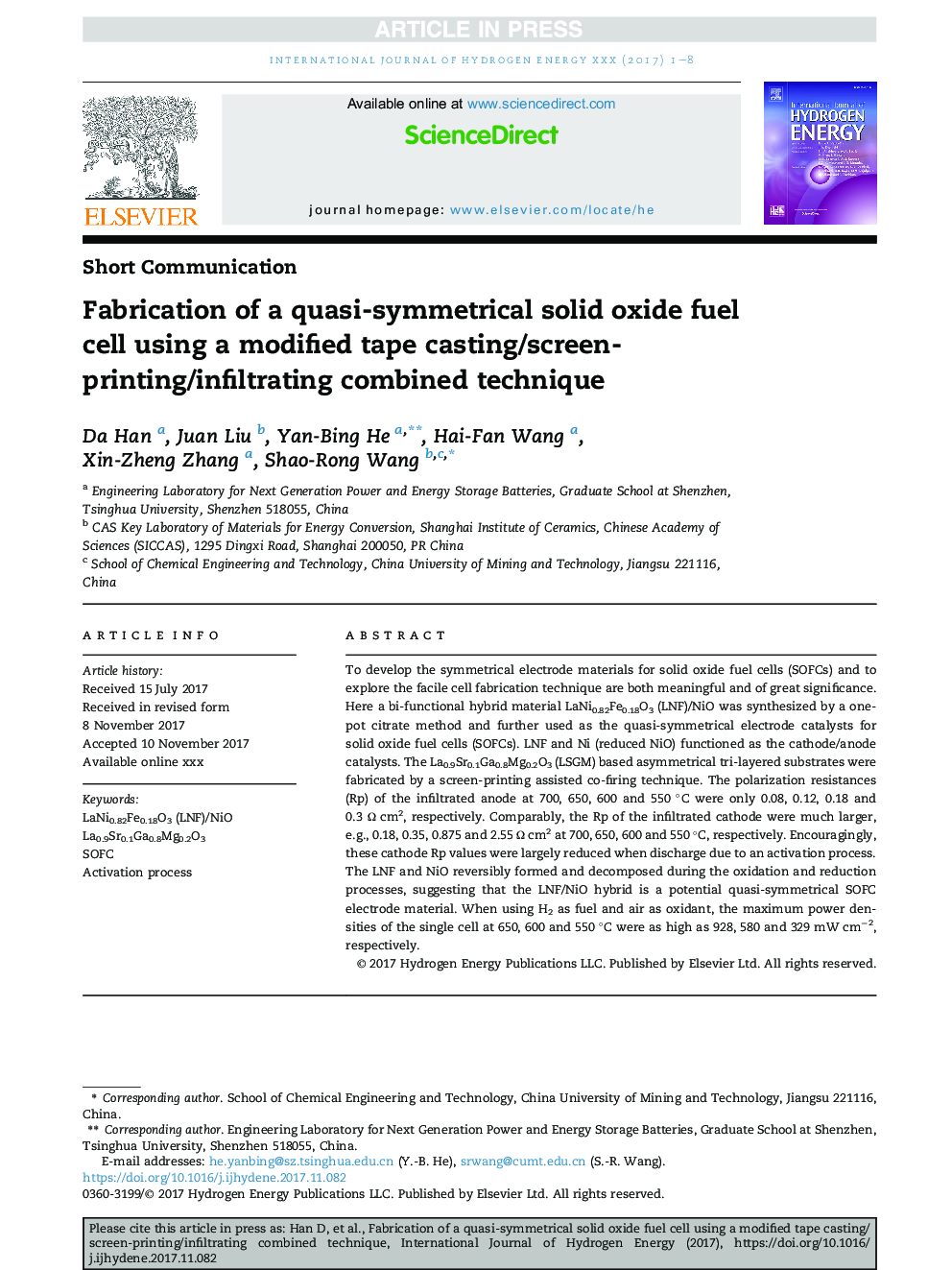| Article ID | Journal | Published Year | Pages | File Type |
|---|---|---|---|---|
| 7708745 | International Journal of Hydrogen Energy | 2018 | 8 Pages |
Abstract
To develop the symmetrical electrode materials for solid oxide fuel cells (SOFCs) and to explore the facile cell fabrication technique are both meaningful and of great significance. Here a bi-functional hybrid material LaNi0.82Fe0.18O3 (LNF)/NiO was synthesized by a one-pot citrate method and further used as the quasi-symmetrical electrode catalysts for solid oxide fuel cells (SOFCs). LNF and Ni (reduced NiO) functioned as the cathode/anode catalysts. The La0.9Sr0.1Ga0.8Mg0.2O3 (LSGM) based asymmetrical tri-layered substrates were fabricated by a screen-printing assisted co-firing technique. The polarization resistances (Rp) of the infiltrated anode at 700, 650, 600 and 550 °C were only 0.08, 0.12, 0.18 and 0.3 Ω cm2, respectively. Comparably, the Rp of the infiltrated cathode were much larger, e.g., 0.18, 0.35, 0.875 and 2.55 Ω cm2 at 700, 650, 600 and 550 °C, respectively. Encouragingly, these cathode Rp values were largely reduced when discharge due to an activation process. The LNF and NiO reversibly formed and decomposed during the oxidation and reduction processes, suggesting that the LNF/NiO hybrid is a potential quasi-symmetrical SOFC electrode material. When using H2 as fuel and air as oxidant, the maximum power densities of the single cell at 650, 600 and 550 °C were as high as 928, 580 and 329 mW cmâ2, respectively.
Keywords
Related Topics
Physical Sciences and Engineering
Chemistry
Electrochemistry
Authors
Da Han, Juan Liu, Yan-Bing He, Hai-Fan Wang, Xin-Zheng Zhang, Shao-Rong Wang,
